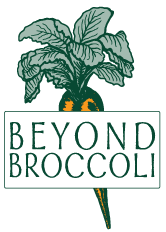Many of you have heard me rant about various fad diets. I lament how easily these temporary promises of a better, thinner, healthier version of ourselves take hold in our often anxious and preoccupied minds. I know humans innately crave a mix of new experiences (and foods) as well as the comfort of familiar routines (and foods), so I get why at least some of these fads are appealing. We know at some level we will never look like the celebrity du jour touting this fad as the secret to her success. We understand that no matter how much we long for simple solutions to our problems, it is unlikely the complex layers of our issues will be unraveled simply and with minimal effort.
Yet we can’t help ourselves. The power of our imagination is so great that we enter each new fad wide-eyed with possibility. Maybe this time we will lose weight, gain health and self-confidence, and all of the problems we think are tied to our weight and appearance will magically melt away.
I am reminded of my favorite nickname of a hockey teammate in Seattle – “Dream Crusher.” Though I understand very well the myriad reasons all of us are attracted to different fads at some point or another (this extends beyond fad diets for those who think this post doesn’t apply to you), I am here to crush that dream. There are no quick fixes to solve complex problems related to weight and health.
Lucky for you I am not particularly comfortable with the moniker “Dream Crusher,” as appealing as it is for a defensive partner on the ice in the context of a hockey game. I prefer to inspire hope and to support the process of change that leads my clients toward their goals and whatever it takes for them to live in harmony with their values. So I have put together a class called “The Jungle Effect” to appeal to your sense of adventure while honoring your need for comfort and the familiar.
“The Jungle Effect” is a phrase coined by integrative physician Daphne Miller. Miller observed several patients who experienced health problems when they transitioned away from their traditional way of eating and adopted the ways of our modern, industrialized society. One client in particular spent time in a traditional community in the jungle as a child and when she returned to this place for an extended visit years later, many health issues she developed as an adult resolved.
Intrigued by this idea that returning to a simpler way of eating and living could reclaim health, Miller explores five areas in the world where populations still follow a mainly traditional way of life, including eating habits, and enjoy an unusually low incidence of various chronic diseases and conditions that plague much of the developed world.
There are many aspects of Miller’s approach that appeal to me. First, she uses stories of real people to introduce us to these exotic places and to give us ideas about how we can integrate traditional ways into our modern lives.
Next, there is a lot of nutrition myth-busting that occurs throughout the book, especially related to our annoying tendency to reduce nutrition to specific nutrients as a guide to a “healthy diet.” While she does introduce information about components in foods that have powerful health benefits like the omega-3 fats found in fish, she presents a broader picture of nutritional benefits. Popular ideas such as simply eating “too many carbs” is a general problem vanish as we learn that the people of Copper Canyon, Mexico eat a traditional diet that is composed of roughly 80% carbohydrates and enjoy one of the lowest rates of diabetes in the world.
Perhaps the best part of the book for me though, is that Miller provides a picture of each culture that extends beyond what they eat. There is no doubt the “what” is important, yet through Miller’s presentation of cultures as diverse as Crete and Iceland we are encouraged to look beyond what is eaten and contemplate how food is produced, prepared and shared, along with many other aspects of daily life in these communities that benefit their health.
“The Jungle Effect,” and more specifically the idea of pursuing more traditional ways of eating, is the closest thing I think we will find to a “simple solution.” By definition a culture that continues its way of life, including eating habits, over centuries is going to have a more simple approach than our post-industrial modern society. The challenge then becomes reclaiming simplicity in a complex society, no small feat as many of you know.
Next week’s class through our local branch of Central Wyoming College is based on some of the important concepts from Miller’s book, complete with foods that represent these special places – Copper Canyon, Mexico, the islands of Crete and Okinawa, Cameroon, West Africa, and Iceland. We will explore some of the key concepts common to this diverse collection of cultures that contribute to good health and longevity. Best of all, we will embrace the excitement that comes with trying something new while uncovering the comfortable, familiar aspects of this simple approach that require no special talents beyond our own inner wisdom.


